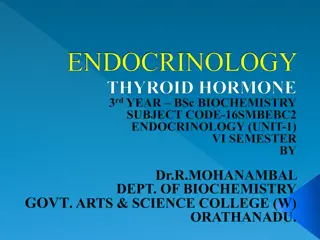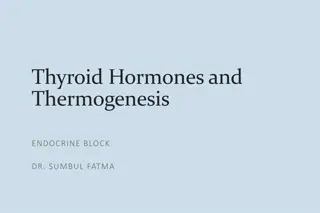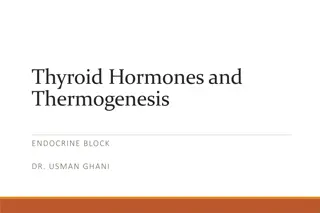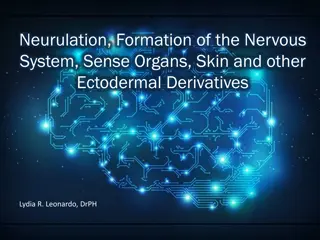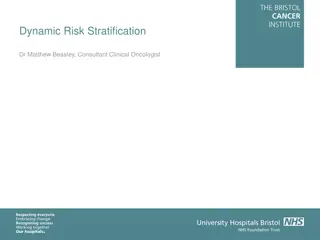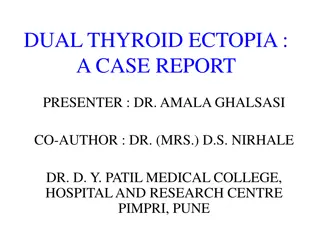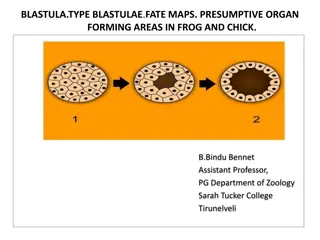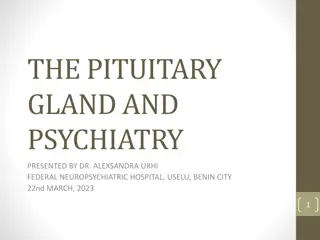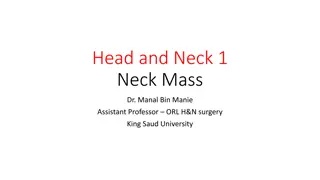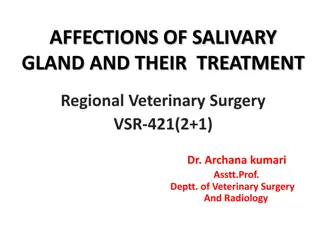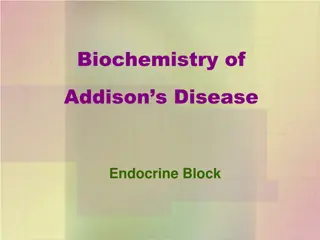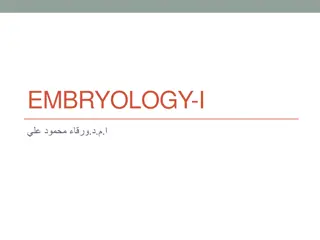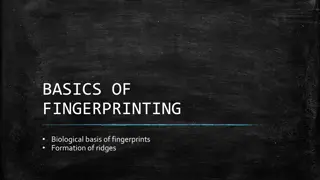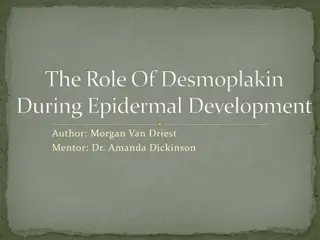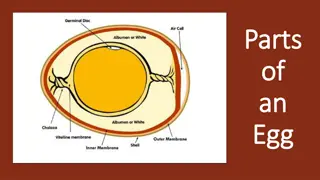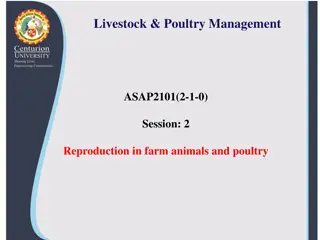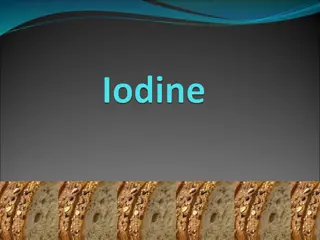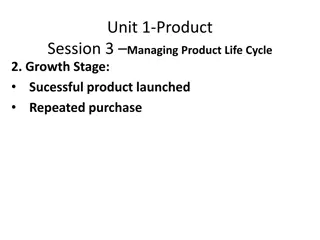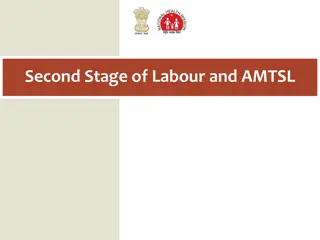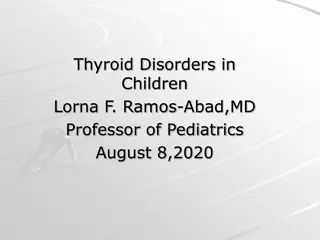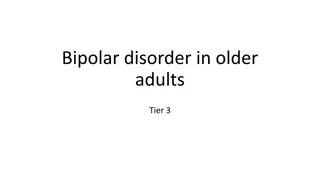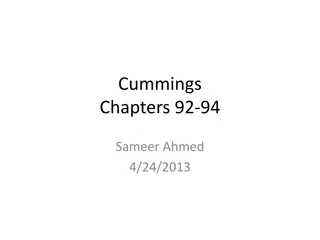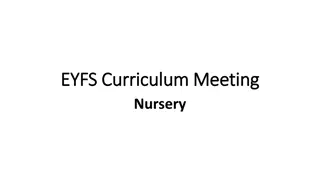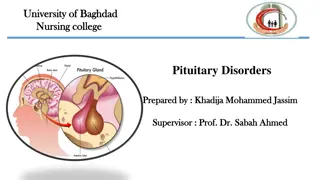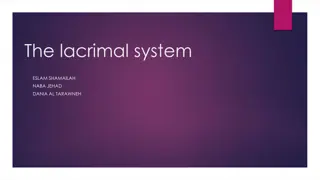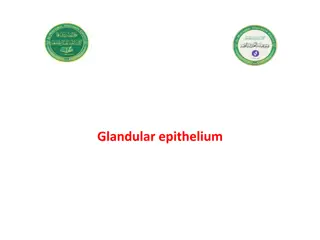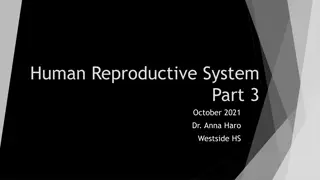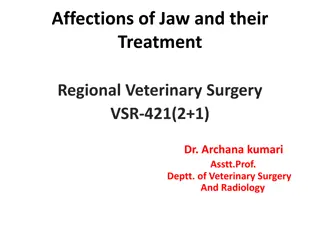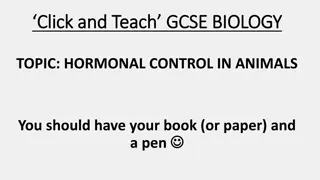Development of Thyroid Gland in Embryonic Stage
The thyroid gland is the first endocrine gland to develop in the human body, starting from a median endodermal thickening in the primitive pharynx. The process involves the descent of the thyroid diverticulum and formation of lobes by week 7 of embryonic development. The thyroid gland begins functioning around the end of the third month, marked by the appearance of follicles containing colloid. This detailed process is crucial for understanding the formation and function of the thyroid gland in embryonic stages.
Download Presentation

Please find below an Image/Link to download the presentation.
The content on the website is provided AS IS for your information and personal use only. It may not be sold, licensed, or shared on other websites without obtaining consent from the author. Download presentation by click this link. If you encounter any issues during the download, it is possible that the publisher has removed the file from their server.
E N D
Presentation Transcript
Development Of Thyroid Gland Dr Mukesh Singla Additional Professor AIIMS, Rishikesh
THYROID GLAND DEVELOPMENT The thyroid gland is the first of the body's endocrine glands to develop, on approximately the 24th day of gestation It begins its development from a median endodermal thickening in the floor of the primitive pharynx just caudal to the future site of the tuberculum impar
Descent of the Thyroid Gland Descent of the Thyroid Gland Thickening forms a downgrowth, thyroid diverticulum, which grows into the underlying mesoderm, and as the embryo elongates and the tongue grows, the diverticulum descends in front of the neck and pharyngeal gut The diverticulum is connected to the tongue by a narrow canal, the thyroglossal duct, which opens in the tongue via the foramen cecum, which persists as a vestigial pit on the tongue
..Cont Diverticulum grows rapidly and forms 2 lobes By week 7 of embryonic development, it reaches anterior to the trachea, having acquired a small median isthmus and 2 lateral lobes. By then, the thyroglossal duct usually has disappeared A pyramidal lobe of the thyroid may be observed in as many as 50% of patients. This lobe represents a persistence of the inferior end of the thyroglossal duct that has failed to obliterate.
THE THYROID GLAND begins to function at about the end of month 3, at which time, the first follicles containing colloid can be seen AT FIRST, THE THYROID PRIMORDIUM is made up of a solid mass of entodermal cells
It later breaks up into a network of epithelial cords or plates by invasion of the surrounding mesenchyme By week 10, the cords have divided into small cellular groups, and a lumen forms in each cellular cluster. The cells then arrange themselves in a single layer around the lumen During week 11, colloid is seen in these follicle structures, and even thyroxine can be demonstrated
REMNANTS OF THE THYROGLOSSAL DUCT The normal remains of the thyroglossal duct are the vestigial foramen cecum (of the tongue) and the functional pyramidal lobe of the thyroid gland
Congenital malformations THYROGLOSSAL DUCT CYSTS AND SINUSES Cysts can form anywhere along the course of the developing thyroglossal duct during descent of the developing thyroid gland from the tongue Remnants of the duct may persist and give rise to cysts in the tongue or in the midline of the neck, usually below the hyoid bone
ACCESSORY THYROID TISSUE Very rarely the thyroid fails to descend from the tongue area resulting in a lingual thyroid Incomplete descent, which is rare, may result in a cervical thyroid that is seen in the neck at or just below the hyoid bone Accessory thyroid tissue often is fully functional, originates from remnants of the thyroglossal duct, thus can be found anywhere from the level of the tongue to where the thyroid gland comes to rest in the neck
Ectopic Thyroid tissue and Agenesis Found in thorax in relation to trachea and bronchi or even oesophagus Believed to arise from endodermal cells displaced during formation of laryngotracheal tube. Agenesis of the Thyroid Failure of development of thyroid gland may also occur



